Our goal is to offer every course every term, but sometimes factors like faculty availability and program enrollment keep us from reaching that goal. If you’re concerned about needing to enroll in one particular course, please contact us!
AICAD in Japan
AICAD in Japan: At-A-Glance
Art classes at Osaka University of Arts
Intensive Japanese language curriculum
Small program, lots of support
Limited language pledge
Live with a Japanese student
Out-of-class learning and assignments
Previous slide
Next slide
Fall
- Arrival: 08/21/2024
- Departure: 12/16/2024
- Recommended Credits: 15-18
- Fee: $22,990
- Application Deadline: May 1
SPRING
- Arrival: 01/20/2025
- Departure: 08/11/2025
- Recommended Credits: 15-18
- Fee: $26,740
- Application Deadline: October 1
Fall
- Arrival: 08/21/2024
- Departure: 12/16/2024
- Recommended Credits: 15-18
- Fee: $22,990
- Application Deadline: May 1
SPring
- Arrival: 01/20/2025
- Departure: 08/11/2025
- Recommended Credits: 15-18
- Fee: $26,740
- Application Deadline: October 1
AICAD in Japan students are ready to take their Japanese skills and their art to the next level. With an intensive language curriculum, a language pledge, art classes (taught exclusively in Japanese), and a housing setup aimed at accelerating your adjustment to life in Japan, your semester in Osaka is full of creativity and language gains. This program is open to students of AICAD consortium schools.
Academics in Japan
Semester
Snapshot
- Pre-requisites: Concurrent enrollment at an AICAD institution; JLPT N2 or the equivalent required
- Intensive Japanese language courses
- Studio art classes based off your portfolio + Japanese language proficiency
- Small class sizes for targeted language learning
- Optional electives in Japanese or English
- Limited language pledge
- Host Universities: Osaka Gakuin University and Osaka University of Arts
Curriculum & Syllabi
You take one comprehensive Japanese course for 10 credits, then choose direct-enroll electives at OUA or OGU to meet the recommended 15 to 18 credits.
Japanese Language
You are placed into one of these 10-credit courses:
Art Classes at OUA
You are assigned to art classes by the host university (Osaka University of Arts) based on your submitted portfolio and language capabilities. Classes are 3 to 4 credits each.
- Glassblowing
- Art Science (AR/VR)
- Textiles & Dyeing
- Japanese Painting
- Print Art & Wood Block Printing
- Book Making
- Animation
- Manga
- Gaming
- Poster Design
Electives at OGU
You select up to 2 electives at Osaka Gakuin University, schedule permitting. Electives come in many shapes and sizes, and are taught in Japanese or English. Options differ each term and are either 1.5 or 3 credits each. Some past courses have included:
- Japan’s Environmental Issues
- Japanese Technology Companies
- Japanese Business Culture & Practices
- Japanese Culture & Society
- Power of Japanese Pop Culture
CET converts final grades from OGU to US letter grade equivalents.
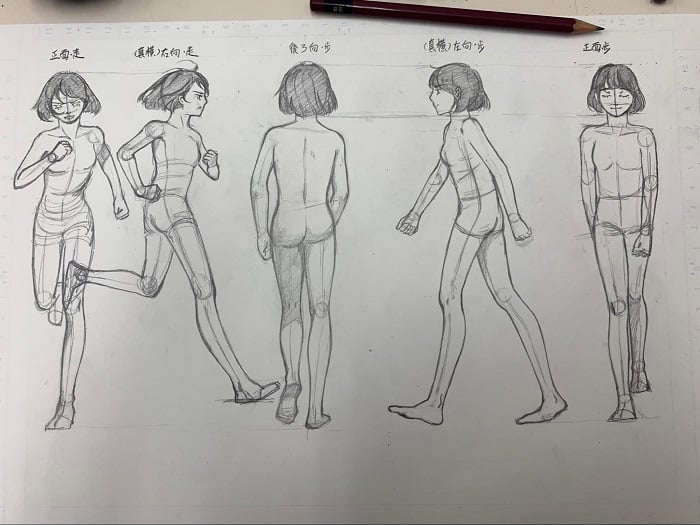
Your Japanese will grow by leaps and bounds
Intensive Japanese learning. Your mornings are dedicated to Japanese—a lot of it. You fly through the textbook as your lessons maintain a challenging pace and your teachers keep you on your toes. And with smaller class sizes, a limited language pledge, and even Japanese in Daily Life—a class section that teaches you the language you need to thrive in your new day-to-day—Japanese will be in everything you do.
Study art at OUA. During the application process, Osaka University of Arts (one of the program’s host universities) reviews your portfolio and assigns you to appropriate art classes. Because these classes are taught in Japanese, the more you learn, the better you will understand the art and culture you’re exploring.
You MIGHT BE INTERESTED IN
Housing and Meals
Previous slide
Next slide
- Apartment
- Off-campus housing
- Live with CET peers & local roommates
- 2-10 people/house
- 1-2 people/room
- Simple communal kitchen or kitchenette, washing machine access, shared bathroom
- Internet access, A/C and heat, bed linens, basic furnishing, kitchenware
Living Like a Local
Local Roommates. Want to find the kaiten-zushi (conveyor belt sushi) restaurant with the best bang for your buck? The quietest study lounge on campus? Sharing a home with a local student from Osaka Gakuin University gives you instant insider’s access to the city, language, and culture. Learn more about living with a local roommate.
Eating in Osaka. Take full advantage of living in the “The Nation’s Kitchen” by diving into the local food scene and enjoying the city’s many cheap eateries. Want to try the latest food trend? Try spice curry—a type of Japanese curry from Osaka made with spices instead of a roux. And for busier days, try out the campus cafeteria or your neighborhood konbini (convenience store). Learn more about accommodating your dietary needs in Japan.
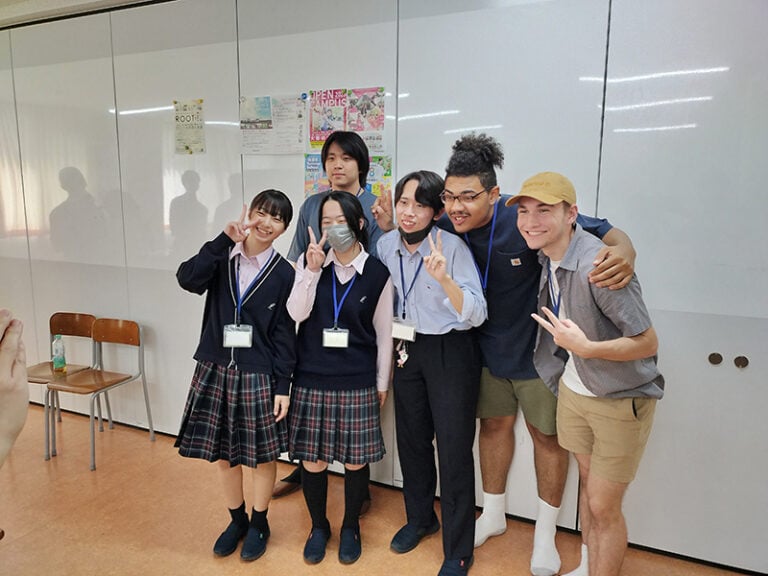
Life in Osaka

- Known locally as: 大阪 Ōsaka
- Population: 2.691 million
- Local Currency: Japanese Yen
- Famous for: Entertainment capital of Japan, amazing food scene, outgoing and friendly locals, less English prominence, major transport hub, strong culture of small family businesses
Take the train downtown and enjoy the neon lights of the city at night. Picnic at the beautiful Banpaku Park or blow off steam at Universal Studios Japan. Strike up a conversation with the owner of your favorite ramen shop. Gather some friends for a food crawl in a city famous for great eats. Hike to breathtaking Minoh Waterfall. And on weekends, enjoy the perks of living in a big, connected city—take the train and explore the neighboring cities of Kyoto, Nara, and Kobe… and then even more of Japan.
Experience Osaka with CET
Around the City. The program offers different activities that allow you to explore Osaka, use your Japanese, or just unwind. You might attend a tea ceremony workshop, try repairing broken pottery with gold at a kintsugi class, or experience the art of traditional Japanese theater with your classmates. And there’s more to see on your own.
Beyond Osaka. Join your local roommates and fellow CET students on an excursion off the beaten path. You might visit the sand dunes of Tottori or head to Tokushima and see the Naruto whirlpools after trying your hand at aizome, the local indigo dyeing tradition.
Previous slide
Next slide
Student Resources
"Everyone is incredibly determined and inspires me to work
harder than I do currently. It’s also nice to have support
though my OGU roommates whenever I need help
navigating the language or the culture or just navigating the
streets themselves."
— Katie Ishioka,
ArtCenter College of Design | Fall student
— Katie Ishioka,
ArtCenter College of Design | Fall student
"In the wood block printing class, I worked on a four-block print for more than a month. It includes sketching, transferring, carving, and printing. My professor specializes in creating watercolor-based woodblock printing, and the class also had a field trip to his solo exhibition in Kyoto."
— Huiting Lian,
Maryland Institute College of Art | Spring student
READ HUITING'S BLOG— Huiting Lian,
Maryland Institute College of Art | Spring student
"OUA's Japanese Painting course is great. The professors and students are very welcoming and help manage some of our language barriers. The classes are very fun, and the coursework is manageable. "
— Anonymous | Fall student
— Anonymous | Fall student
"My character design class was full of Japanese freshmen, there were around 30 of them I guess? Nemoto-Sensei was very funny and patient, she was very kind to international students. The class was mainly about learning facial/body proportions, drawing figure movements, and creating your original characters [...]"
— Lily Zhou,
Maryland Institute College of Art | Spring student
READ LILY'S BLOG— Lily Zhou,
Maryland Institute College of Art | Spring student
Previous slide
Next slide
On-site Staff
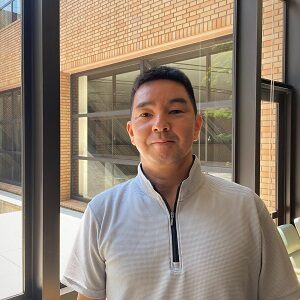
Shogo Sakurai, PhD
Academic Director
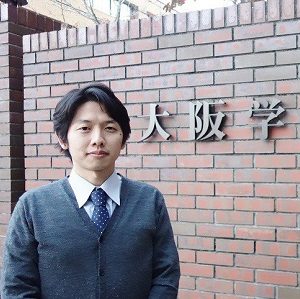
Masatomo Yonezu
Senior Resident Director
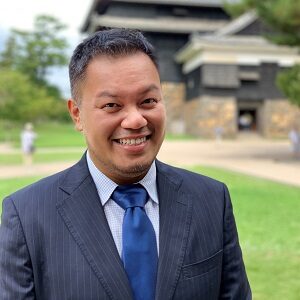
EJ Legaspi
Resident Director
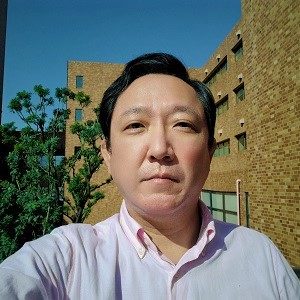
Kazushi Emoto
Academic Coordinator
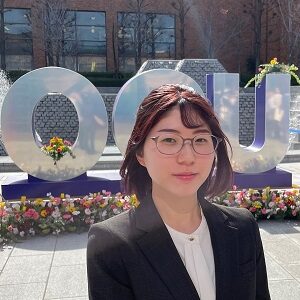
Tomoha Uchimura
Resident Assistant
Program Fees
Fall
$22,990
Spring
$26,740
What's Included
Tuition
All of your classes and program-related learning are included with your tuition.
Housing
We arrange your housing in a fully-furnished apartment or sharehouse. Your program fees go toward rent, utilities, furnishing, and other management costs.
Staff Support
From pre-departure to orientation, from on site to re-entry, CET provides you with the support you need every step of the way.
Commuting Fees
We give you a stipend to cover your commute between the OGU and OUA campuses. And we’ll help you figure out the best train or bus routes.
Insurance
You’re provided with a comprehensive insurance plan through GeoBlue that even includes medical evacuation coverage.
Activities & Excursions
The activities and excursions that we arrange are included in your program fee. All you need to do is remember to bring your camera!
Visa Support
We guide you step-by-step through the visa process. You do the legwork, but we’ll make sure you have the documentation and information you need, when you need it.
Course Materials
Your textbooks and course supplies are covered and waiting for you on site.
Transcript
You receive an official transcript jointly issued by CET and OGU at the end of the term, as well as an OUA transcript for all studio arts courses. If your home institution requires a School of Record transcript, CET is able to provide one through the University of Minnesota.
More on finances
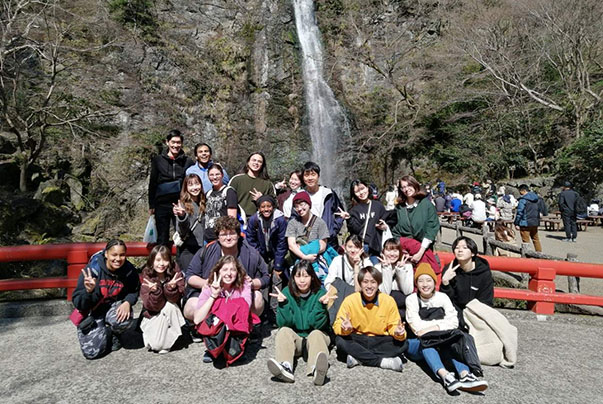
Program Fee Breakdown. Of the total fall program fee, $17,990 goes to tuition and fees, and $5,000 goes to housing and other student life fees. Of the total spring program fee, $17,990 goes to tuition and fees, and $8,750 goes to housing and other student life fees.
Local Cost of Living. Osaka’s cost of living is higher than most of Japan—though not as high as Tokyo. Relative to other countries in Asia, the cost of living in Japan is closer to that of a mid- to large-size US city. Spending always varies, but past students have reported spending 4-10 USD per meal, and 150-230 USD/month for groceries.
Estimated out-of-pocket expenses:
- Round-trip Airfare: $1,800 - $2,800
- Meals: $1,800 (fall) - $3,150 (spring)
- Personal Expenses: $1,200 - $1,500
- Cell Phone Plan: $15 - $20/month
- OGU Area Studies Trips: $20+
- OUA Course Materials: Varies
additional resources
How to Apply
Eligibility
- • Pre-requisites: Concurrent enrollment at an AICAD institution; JLPT N2 or the equivalent required
- • Must be 18 or older at the time of program participation.
- • Open to students of art schools that are both in the AICAD consortium and affiliated with OUA as a sister school
- • GPA: 3.0 or higher is recommended, students with lower GPAs will be asked for a faculty recommendation to supplement their application
Don’t meet the program pre-requisites? Explore a semester at CET Japan.
Online Application Form
Complete the application through your online CET account. This is a brief form that asks for basic information and has a few short answer questions about why you want to study abroad.
Language Evaluation Form
Though you will be evaluated on site, the language evaluation form in your online CET account helps staff get a better idea of your abilities before your arrival.
OUA Application & Art Portfolio
You will send an application and a portfolio of recent pieces directly to Osaka University of Arts. Based off your submission and language abilities, OUA selects which art classes will be the best fit for you. You can find specific instructions for this step in your online CET account.
Passport Information
Upload a scan of your passport to your online CET account. This should be a single scan that includes the signed signature page and the photo/personal details page. Don’t have a passport yet? Let us know and we can help advise you.
Study Abroad Office Recommendation
This is an online form that your study abroad office completes to let us know you meet the requirements to study abroad. To send the electronic form request, simply enter the name and email address of your study abroad advisor in the designated fields of your online account.
Official Transcript
Your online CET account has specific instructions for submitting an official transcript.
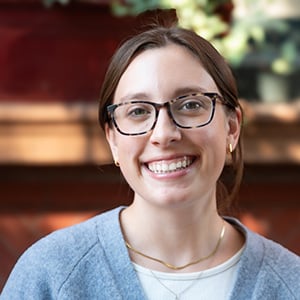
Have a question? Get in touch!
Tara Strauch
Student Services Coordinator
202.349.7325
[email protected]
Price Subject to Change:
CET reserves the right to increase quoted charges at any time without prior notification, based on increased instruction costs, exchange rate fluctuation or other cost increases beyond CET’s control.